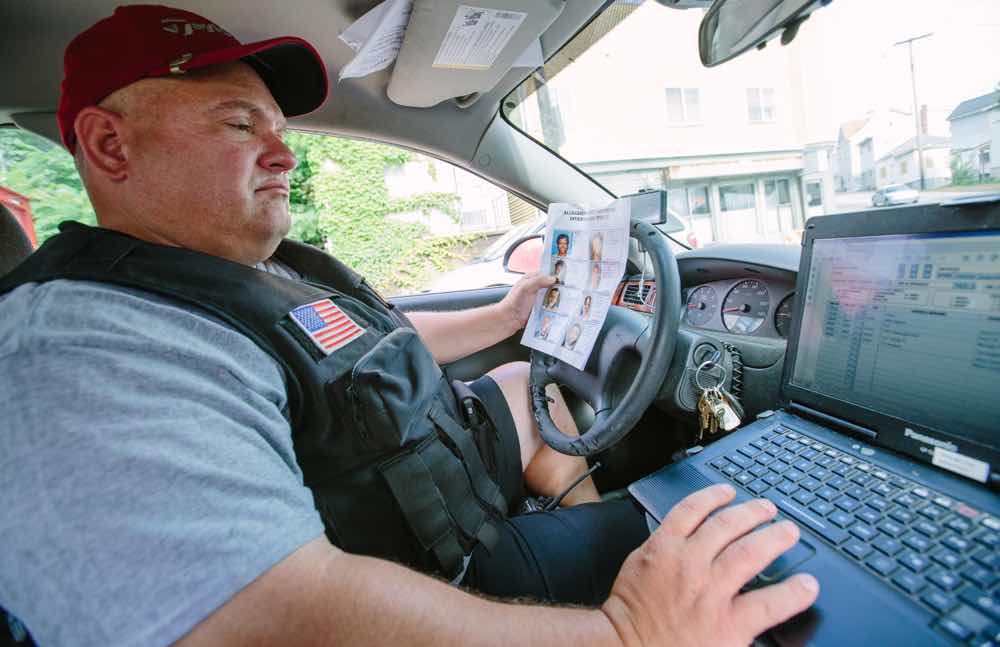They’re using charity to set poor defendants free.
The nationwide movement for bail reform is advancing, gradually, through legislatures and courts. Just last week the U.S. Department of Justice filed a friend-of-the-court brief with the 11th Circuit Court of Appeals, arguing for the first time at this level that putting defendants in jail because of their inability to pay bail is unconstitutional. The appeals court is considering the case of a man in Calhoun, Georgia who was kept in jail for six nights on a misdemeanor charge of being a pedestrian under the influence because he could not afford $160 bail.
Meanwhile, bail reform advocates increasingly are taking direct action: raising charitable funds they use to put up bail for defendants too poor to pay their way out of jail.
These funds have sprung up in recent years in cities across the country, including Boston, Brooklyn, Nashville, and Seattle. Similar funds are currently being explored in St. Louis, Miami, Cincinnati, Oakland, Philadelphia, and Austin. Because bail is typically returned as long as a defendant meets his court obligations, bail funds can be used repeatedly to bail out more people.
Most proponents of bail funds see their work as a form of political resistance, using charity to chip away at a system they believe should not depend on money. “Our overall goal is to end money bail,” said Sharlyn Grace, co-founder of the Chicago Community Bond Fund, which has paid roughly $160,000 for the release of over 30 people, including $35,000 for a woman charged with killing her allegedly abusive husband. “One thing we’re clear about is that we don’t want to exist,” she said.
That is not what motivates the most recent potential entry into the bail fund world. The American Bail Coalition, a trade group for insurance companies that underwrite bail, is considering setting up a charitable bail fund of its own. This represents a change of tune for an industry that has repeatedlydenied that bail often leaves poor people languishing in jail while the well-to-do go home. “It does happen, so I think we need to admit that,” said Jeff Clayton, policy director for the industry coalition, although he insists the inequities aren’t as widespread as bail reform advocates claim. “We can do some good if we put our mind to it.”
Critics of bail suspect the insurance companies’ fund, if it materializes, is part of a public relations campaign to soften the industry’s image and slow the pace of serious reforms.
“The insurance companies think if they do a bail fund, that will slow down the progress of eliminating money, because then they can say, ‘Look, we don’t need bail reform, we’re making progress through bail funds,’” said Tim Schnacke, a bail critic who has analyzed and written extensively about bail systems.
“A national bail fund sponsored by the bail bondsman?” said Cherise Fanno Burdeen, the executive director of the Pretrial Justice Institute. “That’s like a free sample of heroin from a drug dealer.”
Burdeen said bail funds — whether run by the industry or its critics — are unlikely to interfere with bail reform efforts, because lawmakers around the country are more concerned about the other end of the bail system: dangerous people with the means to buy their way out, who may commit new crimes.
“The public safety element of this is more important to stakeholders than poor people who can’t post bond,” said Burdeen.
Bail funds, proponents say, are serving as laboratories of sorts, testing the long-held belief that defendants are more likely to behave themselves and show up for court dates if they have money at stake. The Bronx Freedom Fund, which is an outgrowth of a public defender office, says it has bailed out more than 600 people charged with misdemeanors since 2007. Although they had none of their own money on the line, the vast majority, 96 percent, returned for their court dates, in some cases as many as 15 appearances. Fifty-five percent had their charges dismissed entirely; many of them probably would have pled guilty if the fund had not freed them.
“Anybody will plead guilty to go home, and everybody knows it,” said Robin Steinberg, co-founder of the Bronx fund. “This model allows us to prove that point while freeing people in the meantime.” Steinberg said she is working to establish a national bail fund, called the Bail Project, that would provide seed money and technical assistance in communities across the country. They hope to launch in the fall.
Bail funds have an array of origins and structures. The Massachusetts Bail Fund was started in 2013 by a group of defense attorneys and social workers. The fund uses a scoring tool to help assess each applicant’s potential to appear in court and caps charitable bail at $500 per defendant. The Connecticut Bail Fund, expected to launch this September, was organized by a group of Yale students who are now working on getting their state bondsman licenses (a requirement to post bail in some states). The Lorena Borjas Community Fund in Queens works to raise bail money for transgender women of color, mostly sex workers. And New York City Council Speaker Melissa Mark-Viverito is also working to establish a bail fund. Other funds were started by local activists protesting police violence, including bail funds in Baltimore, Oakland, Ferguson, Cleveland, and most recently, Baton Rouge, where nearly $300,000 was raised to help bail out protesters after Alton Sterling was shot by white police officers.
Laws in some states and cities make it far more difficult to sustain bail funds. When Just City, a nonprofit in Tennessee, tried to establish a bail fund in Nashville and Memphis, the group encountered an obstacle: in some parts of Tennessee, courts deduct fines and fees directly from a person’s bail deposit, regardless of who posted it; this threatened to slowly drain the fund. Nashville officials agreed to make an exception and return money to bail funds without deductions, but Memphis was less accommodating, and Just City has suspended its plan for a bail fund there.
The Massachusetts Bail Fund had early success, bailing out hundreds and documenting a 60 percent case dismissal rate for their clients. But the money ran out. “The need seems to be bottomless,” said Atara Rich-Shea, the fund’s operations director. She said getting the money back has been a challenge because the organization isn’t always notified when a case has concluded. They anticipate reopening in September.
This summer, the Chicago Community Bond Fund temporarily limited the number of new clients it accepts to focus on replenishing the fund. The fund is relying on success stories to help them raise that money. One recent client was Steven Cordon, 23, who was accused of having 1.6 grams of crack cocaine and was booked into Chicago’s Cook County Jail this April because he didn’t have $2,000 to bail himself out. He pleaded not guilty to drug possession and sat behind bars for a month awaiting trial before the Chicago fund was alerted to his case. The fund paid for his release on May 1, and four days later, a judge dismissed the charges, citing a lack of probable cause.
Cordon’s lawyer, Borjan Kovacevic, said the case could have gone much differently if Cordon hadn’t been bailed out. As a defense attorney, he has had numerous clients who pleaded guilty against his advice, he said, because they are desperate to be free. “I knew for a fact they were innocent, but they’re scared, they’re getting beat up, and all they can think about is getting out of there,” Kovacevic said.




 Just look at New Jersey. The argument made by those that support public sector pretrial was that their programs are capable of supervising defendants just as effectively as commercial bail and saving the county money because the person is no longer taking up jail space. Unfortunately, every study done has shown both of these statements to be wrong. Pretrial programs are not effective in supervising defendants. Studies show that defendants fail to appear for court much more often when supervised by a public sector pretrial program. Also, pretrial programs do not save money, but instead create a costly new layer of bureaucracy in an already cash strapped criminal justice system. In the New Jersey pretrial discussions, a Towson State Professor of Economics, testified that a pretrial program in New Jersey could cost the state upwards of $500 million a year. Regardless of this insightful research and expert opinion, New Jersey moved forward anyway and passed legislation to create pretrial programs across the state.
Just look at New Jersey. The argument made by those that support public sector pretrial was that their programs are capable of supervising defendants just as effectively as commercial bail and saving the county money because the person is no longer taking up jail space. Unfortunately, every study done has shown both of these statements to be wrong. Pretrial programs are not effective in supervising defendants. Studies show that defendants fail to appear for court much more often when supervised by a public sector pretrial program. Also, pretrial programs do not save money, but instead create a costly new layer of bureaucracy in an already cash strapped criminal justice system. In the New Jersey pretrial discussions, a Towson State Professor of Economics, testified that a pretrial program in New Jersey could cost the state upwards of $500 million a year. Regardless of this insightful research and expert opinion, New Jersey moved forward anyway and passed legislation to create pretrial programs across the state.